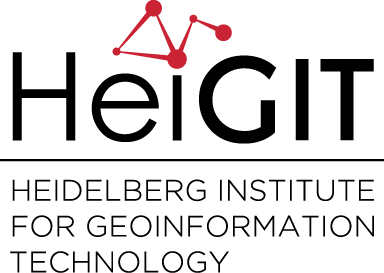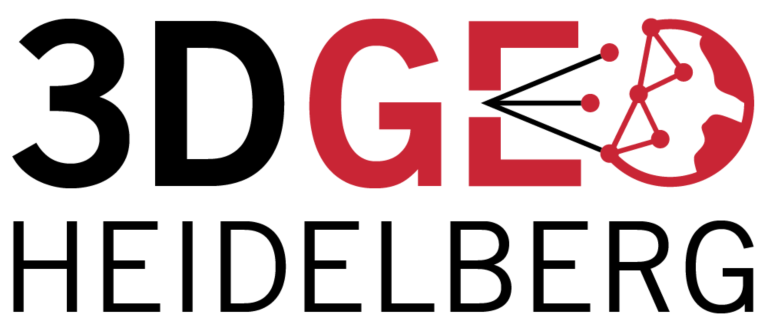Tag: laser scanning
-
How to detect post-harvest growth from terrestrial LiDAR point clouds in precision agriculture? Read the new paper about comparative classification analysis
The new paper “Comparative classification analysis of post-harvest growth detection from terrestrial LiDAR point clouds in precision agriculture” has just been finally released in the ISPRS Journal of Photogrammetry and Remote Sensing. http://dx.doi.org/10.1016/j.isprsjprs.2015.03.003 Citation Koenig, K., Höfle, B., Hämmerle, M., Jarmer, T., Siegmann, B. & Lilienthal, H. (2015): Comparative classification analysis of post-harvest growth detection…
-
How to combine OpenStreetMap and Airborne Laser Scanning data for updating Digital Elevation Models?
The answer can be found in our most recent paper “Updating Digital Elevation Models via Change Detection and Fusion of Human and Remote Sensor Data in Urban Environments” that has just been finally released in the International Journal of Digital Earth. You can find a preprint version of the article freely accessible here: http://koenigstuhl.geog.uni-heidelberg.de/publications/2015/Hoefle/Klonner_et_al_2015_preprint.pdf Citation…
-
Call for Applications: Research Group GIScience (Kleine Forschergruppe Geoinformatik) and Field Trip (Geländepraktikum / Übung) to Greece
Location and Dates The field course will take place from 21-29 April 2015 in Greece. Instructors Bernhard Höfle and Martin Hämmerle Rationale The availability and coverage of high-resolution and highly accurate 3D point clouds of the Earth surface, including the terrain surface as well as raised objects on the bare earth (e.g. trees and debris),…
-
Online article in 3D Visualization World Magazine: UNESCO World Heritage Site Lorsch Abbey
The online magazine 3D Visualization World (www.3dvisworld.com) features an article about the 3D capturing campaigns at Lorsch Abbey: ‘The UNESCO World Heritage Site of Lorsch Abbey is located in Hesse roughly between Heidelberg and Frankfurt/Main, Germany. Laser scanners generating 3D point clouds of the structure and photogrammetric Structure-from-Motion (SfM) approaches were used to study and…
-
Successful field trips of the laser scanning course
This summer semester’s laser scanning course comprises a series of field trips done by small student groups of maximum two persons. Campaign planning and hands-on laser scanning in the field were conducted by the students and supervised by professor Bernhard Höfle, tutor Jörn profe, Kristina König, and Martin Hämmerle. Intensive learning for each single participant…
-
Low-cost 3D sensing of natural objects in the Dechen Cave
In one of Germany’s most visited show caves, the Dechen Cave near Iserlohn, different objects were captured with the GIScience‘s high-end terrestrial laser scanner Riegl VZ-400 and the low-cost structured light camera Microsoft Kinect™ by Johannes Fuchs, Bernhard Höfle, Martin Hämmerle (LiDAR Research Group) and Andrea Schröder-Ritzrau (Institute of Environmental Physics). Morphometric features that are…
-
Laser scanning campaign at UNESCO World Heritage Site Lorsch Abbey
On Wednesday, 19th of March, the Kings Hall (Torhalle) facades at UNESCO World Heritage Site Lorsch Abbey were captured in 3D with a terrestrial laser scanner Riegl VZ-400 (provided by the Chair of GIScience) by Martin Hämmerle (LiDAR Research Group). The produced data set consists of about 65 million laser points and will allow for…
-
Fusion of human and remote sensor data in urban environments
OpenStreetMap (OSM) currently represents the most popular project of Volunteered Geographic Information (VGI): geodata are collected by common people and made available for public use. Airborne Laser Scanning (ALS) enables the acquisition of high-resolution digital elevation models that are used for many applications. Our new study combines the advantages of both ALS and OSM, offering…
-
Digital Geoarchaeology 2013: Laser scanning hands-on workshop with GIScience assistance
On Saturday, 9th of November, a hands-on laser scanning workshop took place within the framework of the Conference ‘Digital Geoarchaeology – New Technologies for Interdisciplinary Human-Environmental Research‘ (held at the Heidelberg Academy of Sciences and Humanities). The conference organizers Dr. Christoph Siart1) and Dipl.-Geogr. Markus Forbriger2) introduced a group of interested conference participants to terrestrial…
-
LiDAR Research group attends the Workshop on “UAV-based Remote Sensing Methods for Monitoring Vegetation”
The Workshop on UAV-based Remote Sensing Methods for Monitoring Vegetation was held at the University of Cologne, Germany. Around 120 participants discussed the topics UAVs, Vegetation Monitoring, Hyperspectral Vegetation Analysis, Multispectral Vegetation Analysis, 3D-Approaches, Vegetation Indices, Laserscanning and Stereo Photogrammetry. The LiDAR Research Group, represented by Kristina Koenig, attends the Workshop with two posters, dealing…
-
Sunny field trip of laser scanning course
On 7th of July, the summer semester’s laser scanning course was on a field trip for capturing a gravel bar of the river Neckar next to Ilvesheim. Apart from the main goal of experiencing ‘real life scanning’, the produced data now is used in various analyses: Based on two other datasets from 2011 and 2012***,…


